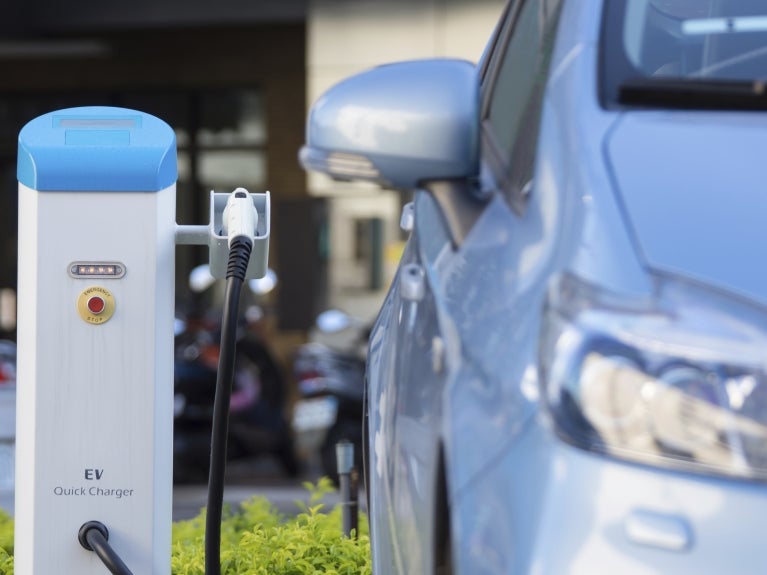IRS Issues Guidance on Battery Sourcing Requirements for Clean Vehicle Tax Credits

The Internal Revenue Service (IRS) published guidance on April 17, 2023, in the form of a Notice of Proposed Rulemaking (NPRM), detailing the critical minerals and battery components requirements under Section 30D of the Internal Revenue Code (IRC), enacted by the Inflation Reduction Act of 2022 (IRA). Going forward, only new passenger vehicles with batteries that meet either (or both) of the sourcing requirements will be eligible for the Section 30D clean vehicle tax credit.
Automakers and companies in the clean vehicle supply chain should review the NPRM closely to become familiar with the IRS's proposed process for identifying supply chains and assessing compliance with the statutory critical minerals and battery component requirements. Publication of the NPRM initiated a 60-day public comment period prior to issuance of final rules. However, the proposed rules are effective and govern vehicle eligibility in the interim.
Background
President Biden signed into law the IRA on August 16, 2022, which (among many other provisions) modified existing tax credits for clean vehicles (i.e., plug-in electric and fuel cell electric vehicles) in Section 30D of the Internal Revenue Code. The IRA also added two new tax credits: used passenger vehicles (Section 25E) and commercial vehicles (Section 45W), which are not subject to the NPRM.
Prior to the IRA, new passenger vehicles were eligible for up to a $7,500 tax credit, subject to a 200,000-vehicle production cap. Section 30D of the IRA eliminated the vehicle cap but added several other eligibility requirements—including final assembly location, income, and manufacturer's suggested retail price (MSRP) limitations. In addition, for new passenger vehicles, eligibility for the maximum $7,500 credit now depends on how and where the vehicle's battery was manufactured. The vehicle credit now represents the sum of two amounts: $3,750 if the battery meets critical mineral requirements and $3,750 if the battery meets certain component requirements.
New Requirements
This much-anticipated NPRM implements the critical minerals and battery components requirements for new passenger vehicles—the details of which the IRS left unaddressed in its first round of guidance on the new clean vehicle tax credit system in December 2022. In addition, the NPRM defines key terms applicable to Section 30D tax credits, including a revised definition of "vehicle classifications," which is important for assessing MSRP limitations by vehicle class.
Critical Minerals Requirement
To qualify for a $3,750 tax credit this year, at least 40% of the value of the critical minerals (as defined in Section 45X(c)(6) of the IRC) in the battery of a new passenger vehicle must be either (1) extracted or processed in the United States, or in any country with which the United States has a free trade agreement, or (2) recycled in North America. On January 1, 2024, the percentage requirement increases by 10% annually through December 31, 2026, after which vehicles must meet an 80% critical minerals requirement to claim the credit. The NPRM identifies 21 countries with which the United States currently has a free trade agreement in effect, including Japan, which recently executed a critical minerals-specific trade agreement. The European Union is considering a similar approach. Importantly, the purpose of the IRA was, in part, to create an industrial policy that promotes domestic manufacturing of clean energy materials and components to accelerate job growth, skilled labor, and economic development in the United States. To the ire of Senator Joe Manchin (D–West Virginia), a key sponsor who views the IRA as a way to mitigate job losses associated with the decline of coal mining, allowing manufacturers to source critical minerals from around the world seems to run counter to that objective. However, the Biden administration appears to be promoting not just industrial policy with the NPRM but also foreign policy by bolstering trade relationships with key allies—to the exclusion of China and Russia.
To implement these two competing objectives, Section 1.30D-3(a) of the NPRM outlines a three-step process for qualified manufacturers to comply with the critical minerals requirement. First, manufacturers must identify the procurement chain (or chains) for each critical mineral. Procurement chains are defined as "a common sequence of extraction, processing, or recycling activities that occur in a common set of locations, concluding in the production of constituent materials." A single critical mineral might have multiple procurement chains if, for example, it undergoes the same extraction, processing, or recycling in different locations. Under the NPRM, each procurement chain must be analyzed separately.
Second, each critical mineral procurement chain must be evaluated to determine whether critical minerals from the chain meet the statutory requirements. For 2023 and 2024, the NPRM allows manufacturers to use a "50% of value added test." This means if 50% or more of the value added to the critical mineral is either extracted/processed in the United States or a country with which the United States has a free trade agreement, or is recycled in North America, then the critical mineral meets the requirements and is considered a "qualifying critical mineral." The IRS indicates this test is meant to ease the transition to the new rule and anticipates "a more stringent test" in later years that reflects "the potential for more detailed tracking throughout manufacturers' supply chains."
Once the qualifying critical minerals have been identified, manufacturers calculate the percentage of the value of those qualifying critical minerals in the battery which, when compared to the applicable statutory percentage requirement, determines credit eligibility. Importantly, while the IRA contains critical minerals sourcing requirements for the Section 30D tax credit, it did not do so for the similar Section 45W credit available for commercial vehicles. Thus, the NPRM's sourcing requirements are limited to Section 30D, which is expected to be used primarily by retail vehicle buyers for personal use. To assist consumers, the IRS and the U.S. Department of Energy (DOE) maintain a list of light-duty vehicles that manufacturers indicate are eligible for all (or part) of the $7,500 tax credit.
Battery Components Requirement
To qualify for a $3,750 tax credit this year—instead of, or in addition to, the $3,750 available for the critical minerals requirement—at least 50% of the value of the components contained in the vehicle's battery must be manufactured or assembled in North America. On January 1, 2024, the percentage requirement increases by 10% annually through December 31, 2028, after which vehicles must meet a 100% battery components requirement to claim the credit.
Similar to the process for critical minerals, Section 1.30D-3(b) of the NPRM outlines a multistep process for qualified manufacturers to determine compliance with the battery components requirement. First, manufacturers need to identify qualifying "North American battery components" (i.e., battery components in which "substantially all" of the manufacturing or assembly occurs in North America). In steps two and three, respectively, manufacturers calculate the total incremental value of "North American battery components" and the total incremental value of all battery components. Then, manufacturers calculate the percentage value of battery components attributable to manufacturing or assembly in North America, which, when compared to the statutory percentage requirements, determines credit eligibility.
For both the critical minerals and battery component requirements, the NPRM directs manufacturers to select a date after final processing or recycling to complete the calculation. Manufacturers may calculate the qualifying critical mineral content either on a vehicle-specific basis or by groups of vehicles subject to the same manufacturing processes.
Other Requirements
In addition to the percentage requirements above, a vehicle cannot obtain a Section 30D tax credit if any critical minerals or battery components originate from a "foreign entity of concern." The IRS does not address or identify foreign entities of concern in this NPRM, stating that such rules "will be addressed in future guidance." It remains to be seen whether this list will identify governments at the national or subnational level.
The NPRM also provides proposed definitions of key terms, including final assembly, MSRP, vehicle classifications, placed in service, extraction, processing, constituent materials, recycling, and free trade agreement. For vehicle classifications, IRS changed course from its original guidance and is now proposing to use the fuel economy labeling in 40 CFR 600.315–08, which allows the U.S. Environmental Protection Agency (EPA) discretion to assign certain "crossover" vehicles to a class on a case-by-case basis, taking into account the consumer perspective and marketing segment targeted by the manufacturer.
This last change is significant because MSRP limitations for the Section 30D tax credit apply based on vehicle classification, allowing EPA to effectively increase or decrease the number of vehicles eligible for the Section 30D tax credit. For example, if a crossover is characterized as a "truck," then it could be subject to the higher MSRP limitation of $80,000; if characterized as a car, then it would be subject to a lower MSRP limitation of $55,000. The change also aligns vehicle classifications for Section 30D credits with information publicly available on the DOE FuelEconomy.gov website.
Next Steps
As noted above, IRS is taking public comment on the NPRM for 60 days through June 16, 2023. In the interim, the Section 30D critical minerals and battery sourcing requirements in the NPRM are effective and govern vehicle eligibility. Vehicles "placed in service" (meaning the date that the taxpayer takes actual possession of the vehicle, even if purchased prior) after April 17, 2023, must meet either (or both) of the new requirements to be eligible for a Section 30D tax credit. Commenters should carefully review the critical minerals and battery component sourcing requirements to ensure that these requirements are clear and can reasonably be met.
© 2023 Perkins Coie LLP


